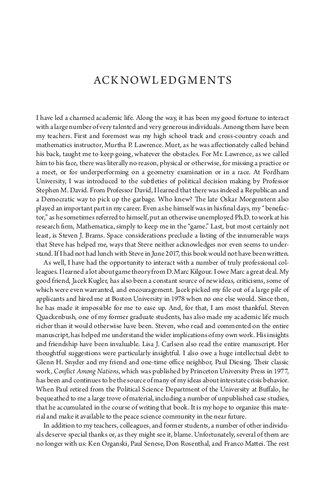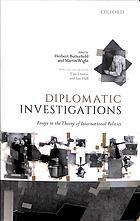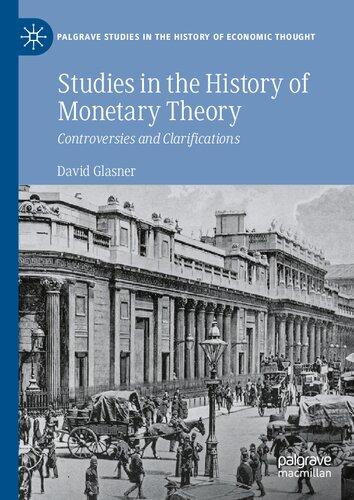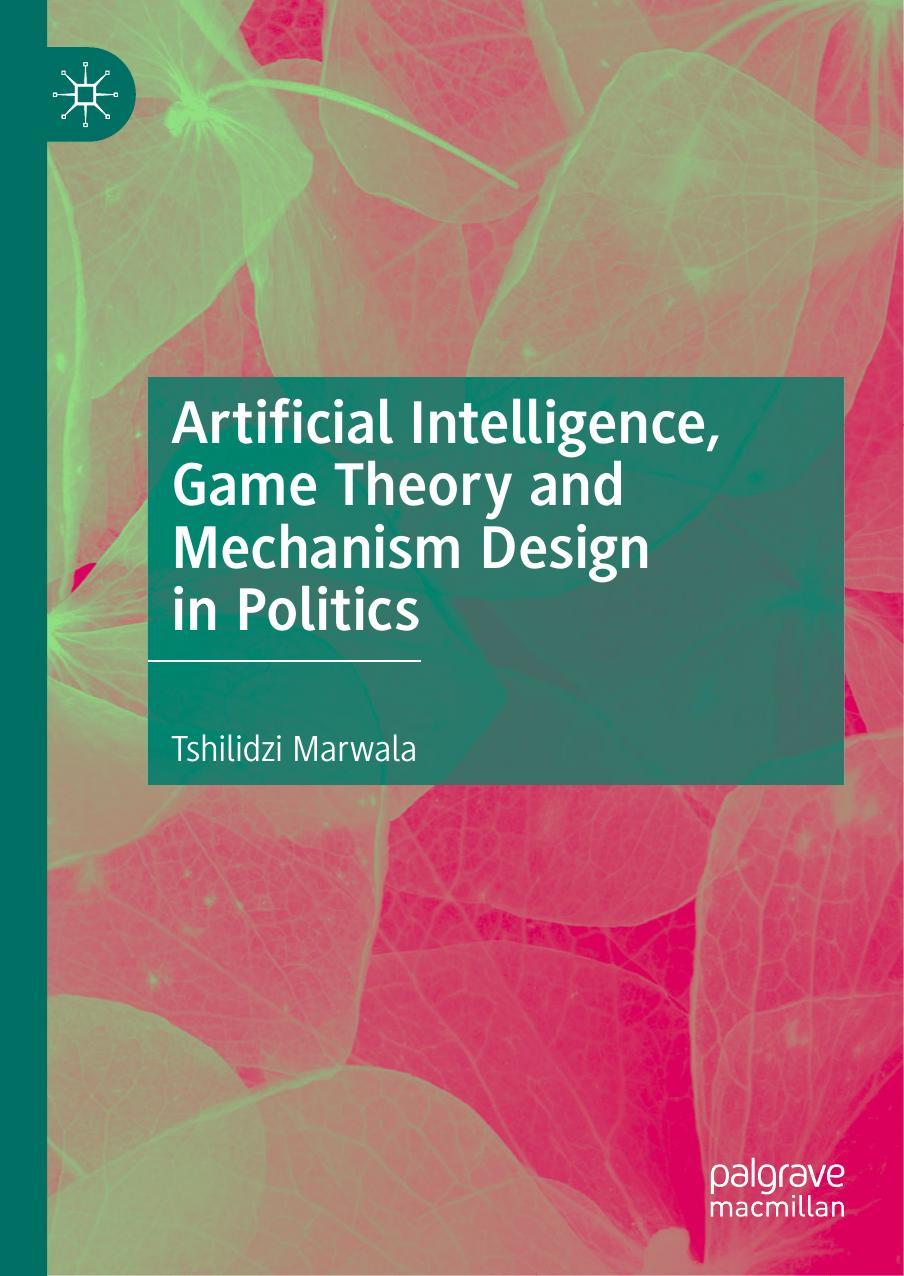Game Theory and Security Studies
1.1 Introduction
Game theory is the science of interactive decision making. It was created in one fell swoop with the publication of John von Neumann and Oskar Morgenstern’s Games and Economic Behavior (1944) by Princeton University Press.1 Widely hailed when it was published, the book became an instant classic. Its impact was enormous. Almost immediately, game theory began to penetrate economics—as one might well expect. But soon afterward, applications, extensions, and modifications of the framework presented by von Neumann and Morgenstern began to appear in other fields, including sociology, psychology, anthropology, and, through political science, international relations and security studies.2
In retrospect, the ready home that game theory found in the field of security studies is not very surprising. Much of the gestalt of game theory can easily be discerned in the corpus of diplomatic history and in the work of the most prominent theorists of international politics.3 And its key concepts have obvious real world analogs in the international arena.
1.2 Primitive Concepts
The basic concept is that of a game itself. A game can be thought of as any situation in which the outcome depends on the choices of two or more decision makers. The term is somewhat unfortunate. Games are sometimes thought of as lighthearted diversions. But, in game theory, the term is not so restricted. For instance, most if not all interstate conflicts qualify as very serious games, including, but not limited to, trade negotiations, acute crises, and all-out wars.
1 This chapter is based on Zagare (2008).
2 For an autobiographical account of the critical role he played in introducing game theory to political scientists and international relations specialists, see Riker (1992).
3 For the connections between realism and game theory, see Jervis (1988a).
Game Theory, Diplomatic History and Security Studies. Frank C. Zagare. Oxford University Press (2019). © Frank C. Zagare 2019. DOI: 10.1093/oso/9780198831587.001.0001
In game theory, decision makers are called players. Players can be individuals or groups of individuals who, in some sense, operate as a coherent unit. Presidents, prime ministers, kings and queens, dictators, foreign secretaries, and so on can therefore sometimes be considered as players in a game. But so can the states in whose name they make foreign policy decisions. It is even possible to consider a coalition of two or more states as a player. For example, in their analysis of the July Crisis of 1914, Snyder and Diesing (1977) use elementary game theory to examine the interaction between “Russia–France” and “Austria–Germany.”
The decisions that players make eventually lead to an outcome. In game theory, an outcome can be just about anything. Thus, the empirical content associated with an outcome will vary with the game being analyzed. Sometimes, generic terms such as “compromise” or “conflict” are used to portray outcomes. At other times, the descriptors are much more specific. Snyder and Diesing use the label “Control of Serbia” by Austria–Germany to partially describe one potential outcome of the July Crisis.
Reflecting perhaps the intensity of the Cold War period in the United States in the early 1950s, almost all of the early applications of game theory in the field of security studies analyzed interstate conflicts as zero-sum games. A zero-sum game is any game in which the interests of the players are diametrically opposed. In a zero-sum game, what one player wins, the other loses. Examples of this genre include an analysis of two World War II battles by O. G. Haywood (1954) and a study of military strategy by McDonald and Tukey (1949).
By contrast, a nonzero-sum game is an interactive situation in which the players have mixed motives, that is, in addition to conflicting interests, they may also have some interests in common. Two states locked in an economic conflict, for instance, obviously have an interest in securing the best possible terms of trade. At the same time, they both may also want to avoid the costs associated with a trade war. It is clear that, in such instances, the interests of the two states are not diametrically opposed.
The use of nonzero-sum games became the standard form of analysis in international politics toward the end of the 1950s, due in no small part to the scholarship of Thomas Schelling (1960, 1966) whose works are seminal. When Schelling’s book The Strategy of Conflict was republished in 1980 by Harvard University Press, he remarked in a new preface that the idea that conflict and common interest were not mutually exclusive, so obvious to him, was among the book’s most important contributions. In 2005, Schelling was awarded the Nobel Prize in economics for his work on game theory and interstate conflict. The award was well- deserved.4
Most studies also make use of the tools and concepts of noncooperative game theory. A noncooperative game is any game in which the players are unable to irrevocably commit themselves to a particular course of action, for whatever reason.5 For example, the players may be unable to communicate with one another to jointly decide on an action plan. Or there may be some legal impediment to coordinated decision making. Since it is commonly
4 To understand why, see Myerson (2009).
5 By contrast, binding agreements are possible in a cooperative game.
understood that the international system lacks an overarching authority that can enforce commitments or agreements, it should come as no surprise that noncooperative game theory holds a particular attraction for theorists of interstate conflict.
1.3 Strategic Form Games and Nash Equilibria
Game theorists have developed a number of distinct ways to represent a game’s structure. Initially, the strategic form (sometimes called the normal or the matrix form) was the device of choice. In the strategic form, players select strategies simultaneously, before the actual play of the game. A strategy is defined as a complete contingency plan that specifies a player’s choice at every situation that might arise in a game. Figure 1.1 depicts a typical arms race game between two states, State A and State B, in strategic form.6 Although the generic name for this game is Prisoners’ Dilemma, it is referred to here as the Arms Race Game.7
In this representation, each state has two strategies: to cooperate (C) by not arming, and to defect from cooperation (D) by arming. If neither arms, the outcome is a compromise: a military balance is maintained, but at little cost. If both arm, then both lose, as an arms race takes place; the balance is maintained, but this time at considerable cost. Finally, if one state
State B
Not Arm (C)Arm (D)
Not Arm (C)
State A
Arm (D)
Tacit Arms Control (3,3)
B Gains Advantage (1,4)
A Gains Advantage (4,1) Arms Race (2,2)∗
Key: (x,y) = payoff to State A, payoff to State B ∗ = Nash equilibrium
Figure 1.1 Arms Race Game (Prisoners’ Dilemma)
6 For obvious reasons, such a game is called a two-person game. Games with three or more players are referred to as n-person games. The Tripartite Crisis Game, which is introduced in Chapter 2, is an example of an n-person game.
7 “Prisoners’ Dilemma” takes its name from a story that Albert W. Tucker, the chair of Princeton’s psychology department, told his students to illustrate its structural dynamics. For the story and background, see Poundstone (1992: 116–21). The story itself is well known and can be found in most game-theory textbooks, including Zagare (1984).
arms and the other does not, the state that arms gains a strategic advantage, and the state that chooses not to arm is put at a military disadvantage.
Each cell of the matrix contains an ordered pair of numbers below the names of the outcomes. The numbers represent the payoff that the row player (State A) and the column player (State B), respectively, receives when that outcome obtains in a game. Payoffs are measured by a utility scale. Sometimes, as in this example, only ordinal utilities are, or need be, assumed. Ordinal utilities convey information about a player’s relative ranking of the outcomes. In many studies of interstate conflict, however, cardinal utilities are assumed. A cardinal scale indicates both rank and intensity of preference.
In this example, the outcomes are ranked from best (i.e., “4”) to worst (i.e., “1”). Thus, the ordered pair (4,1) beneath the outcome A Gains Advantage signifies that this outcome is best for State A and worst for State B. Similarly, the outcome Tacit Arms Control is next best for both players.
In game theory, the players are assumed to be instrumentally rational. Rational players are those who maximize their utility. Utility, though, is a subjective concept. It indicates the worth of an outcome to a particular player. Since different players may evaluate the same outcome differently, the rationality assumption is simply another way of saying that the players are purposeful, that is, that they are pursuing goals (or interests) that they themselves define.
Rationality, however, does not require that the players are necessarily intelligent in setting their goals. It may sometimes be the case that the players are woefully misinformed about the world and, as a consequence, have totally unreasonable objectives. Still, as long as they are purposeful and act to bring about their goals, they can be said to be instrumentally rational.8
Rationality also does not imply that the players will do well and obtain their stated objective, as is easily demonstrated by identifying the solution to the Arms Race Game. A solution to any strategic form game consists of the identification of (1) the best, or optimal, strategy for each player and (2) the likely outcome of the game. The Arms Race Game has a straightforward solution.
Notice first that each player (state) in the Arms Race Game has a strictly dominant strategy, that is, a strategy that is always best regardless of the strategy selected by the other player. For instance, if State B chooses not to arm, State A will bring about its next-best outcome (3) if it also chooses not to arm; however, it will receive its best outcome (4) if it chooses to arm. Thus, when State B chooses (C), State A does better by choosing (D). Similarly, if State B chooses to arm, State A will bring about its worst outcome (1) if it chooses not to arm; however, it will receive its next-worst outcome (2) if it chooses to arm. Again, when State B chooses (D), State A does better by choosing (D). Regardless of what strategy State B selects, therefore, State A should choose (D) and arm. By symmetry, State B should also choose to defect by arming. And when both players choose their unconditionally best strategy, the outcome is an Arms Race—which is next-worst for both players.
The strategy pair (D,D) associated with the outcome labeled Arms Race has a very important property that qualifies it to be part of the solution to the game of Figure 1.1. It is
8 For an extended discussion of the rationality assumption, see Zagare (1990a).
called a Nash equilibrium—named after John Nash, the subject of the film A Beautiful Mind and a co-recipient of the Nobel Prize in economics in 1994, which, not coincidentally, was the fiftieth anniversary of the publication of von Neumann and Morgenstern’s monumental opus. If a strategy pair is a Nash equilibrium, neither player has an incentive to switch to another strategy, provided that the other player does not also switch to another strategy.
To illustrate, observe that if both State A and State B choose to arm (D), State A’s payoff will be its second-worst (2). But if it then decides to not arm (C), its payoff is its worst (1). In consequence, State A has no incentive to switch strategies if both states choose to arm. The same is true of State B. The strategy pair (D,D), therefore, is said to be stable, or in equilibrium.
There is no other strategy pair with this property in the Arms Race Game, as is easily demonstrated. For instance, consider the strategy pair (C,C) associated with the outcome Tacit Arms Control. This outcome is second-best for both players. Nonetheless, both players have an incentive to switch unilaterally to another strategy in order to bring about a better outcome. State B, for instance, can bring about its best outcome (4) by simply switching to its (D) strategy. Thus, the payoff pair (C,C) is not a Nash equilibrium. The same is true for the remaining two strategy pairs in this game, (C,D) and (D,C).
For reasons that will be more fully explained below, strategy pairs that form a Nash equilibrium provide a minimum definition of rational choice in a game. By contrast, strategy pairs that are not in equilibrium are simply inconsistent with rational choice and purposeful action. This is why only Nash equilibria can be part of a game’s solution.
But notice that both players do worse when they are rational and select (D) than when both make an irrational choice and select (C). In other words, two rational players do worse in this game than two irrational players! Paradoxically, however, it is also true that each player always does best by choosing (D). All of which raises a very important question for the two states in our game: can they, if they are rational, avoid an arms race and, if so, under what conditions? More generally, can two or more states ruthlessly pursuing their own interests find a way to cooperate in an anarchic international system?
The definitive answer to this question is highly contentious. Suffice it to say that it is an issue that lies at the heart of the ongoing debate between realists and liberals about the very nature of international politics. That the (Prisoners’ Dilemma) game shown in Figure 1.1 both highlights and neatly encapsulates such a core problem must be counted among game theory’s many contributions to the field of security studies.9
Even though rational players do not fare well in this game, the game itself has a well-defined solution that helps to explain, inter alia, why great states sometimes engage in senseless and costly arms competitions that leave them no more secure than they would have been if they had chosen not to arm. The solution is well defined because there is only one outcome in the game that is consistent with rational contingent decision making by all of the players: the unique Nash equilibrium (D,D).
Not all games, however, have a solution that is so clear-cut. Consider, for example, the two-person game shown in Figure 1.2 that was originally analyzed by John Harsanyi
9 A good place to start when exploring this and related issues is Oye (1986). Baldwin (1993) contains a useful collection of articles, many of which are seminal. Axelrod (1984), which provides one prominent game-theoretic perspective, should also be consulted.
Outcome CC (1,3)∗
Outcome DC (0,0)
Key: (x,y) = payoff to State A, payoff to State B ∗ = Nash equilibrium
Outcome CD (1,3)
Outcome DD (2,2)∗
Figure 1.2 Strategic form game with two Nash equilibria (Harsanyi’s game)
(1977a), another 1994 Nobel Prize laureate in economics. As before, the two players, State A and State B, have two strategies: cooperate (C), or defect from cooperation (D). State A’s strategies are listed as the rows of the matrix, while B’s strategies are given by the columns. Since each player has two strategies, there are 2 × 2 = 4 possible strategy combinations and four possible outcomes. The payoffs to State A and State B, respectively, are again represented by an ordered pair in each cell of the matrix.
Of these four strategy combinations, two are Nash equilibria, as indicated by the asterisks (*). Strategy pair (D,D) is in equilibrium since either player would do worse by switching unilaterally to its other strategy. Specifically, were State A to switch from its (D) strategy to its (C) strategy, which would induce Outcome CD, State A’s payoff would go from “2”— A’s best—to “1”—its next-best outcome. And if State B were to switch to its (C) strategy, B’s payoff would go from “2”—its next-best outcome—to “0”—its worst. Thus, neither player benefits by switching unilaterally to another strategy, so (D,D) is a Nash equilibrium. For similar reasons, strategy pair (C,C) is also a Nash equilibrium; neither player benefits by switching unilaterally to its (D) strategy. In contrast, neither of the remaining two strategy pairs is stable in the sense of Nash, because at least one player would gain by changing strategies.
The existence of two or more Nash equilibria in a strategic form game can confound analysis. When only one Nash equilibrium exists in a game, it is easy to specify a game’s solution. But when two or more equilibria exist, it is clearly more difficult to identify the likely outcome of a game or the best strategy of the players—unless there are criteria that allow discrimination among equilibria and the elimination of some stable strategy pairs from the solution set.
Of course, the possible existence of multiple Nash equilibria in a strategic form game would not be problematic if all equilibria were equivalent—that is, if all extant equilibria have exactly the same consequences for the players—and interchangeable—in the sense that every possible combination of equilibrium strategies are also in equilibrium.
State B
Cooperate (C) Defect (D)
State A
Cooperate (C)
Defect (D)
John Nash (1951) proved long ago that when multiple equilibria exist in a zero-sum game, all equilibrium pairs are both equivalent and interchangeable. But this is clearly not the case in the nonzero-sum game shown in Figure 1.2. The two equilibria are not equivalent simply because the player’s payoffs are different under each equilibrium. For instance, State A’s best outcome is associated with the strategy pair (D,D); however, its next-best outcome is associated with the strategy pair (C,C). The two equilibria are also not interchangeable. Although the strategy pairs (C,C) and (D,D) are in equilibrium, the pairs (C,D) and (D,C) are not. This means that the players cannot use the strategies associated with the two Nash equilibria interchangeably.
Although the two Nash equilibria in the game shown in Figure 1.2 are neither equivalent nor interchangeable, there is one way in which they are can be distinguished. Notice that State B’s defection (D) strategy weakly dominates its cooperation (C) strategy, that is, it provides State B with a payoff that is at least as good, and sometimes better, than its other strategy, no matter what strategy State A selects.10 Thus, there is a good reason to expect that State B will choose (D).
Notice also that if State B defects, State A does better by also defecting. Given that State B defects, State A will receive its highest payoff (2) by defecting, but only its second-highest payoff (1) by cooperating. Since the strategy pair (D,D) is associated with State B’s unconditionally best (or dominant) strategy, and State A’s best response to B’s unconditionally best strategy, one might very well argue that it, and not strategy pair (C,C) is the equilibrium that best qualifies as the solution to Harsanyi’s game.
But before this conclusion is accepted, there is one significant objection that must be considered: the fact that strategy pair (D,D) favors State A at the expense of State B. State B’s payoff is clearly better under (C,C) than it is under (D,D), while it is the other way around for State A. Is there nothing that State B can do to induce the more preferred payoff associated with the equilibrium (C,C)?
One might argue that State B could do better in this game by threatening to choose (C) if State A selects (D), thereby inducing State A to choose (C) and bringing about State B’s most-preferred outcome. But this line of argument is deficient. To understand why, we next explore an alternative representation of Harsanyi’s game, the extensive form. As Morrow (1994: 58) notes, the extensive form “is the basic formalization of game theory.”
1.4 Extensive Form Games, Backward Induction, and Subgame Perfect Equilibria
Figure 1.2 shows Harsanyi’s game in strategic form; Figure 1.3 shows it in extensive form. There are a number of important differences between the two forms of representation. In the strategic form, the players select a strategy which, it will be recalled, is a complete plan of action that specifies what a player will do at every decision point in a game. As well, the
10 By contrast, a strictly dominant strategy always provides a player with a higher payoff than any other strategy, no matter what strategies other players select. Both players in the Arms Race Game shown in Figure 1.1 possess strictly dominant strategies. For a further discussion of this and related concepts, see Zagare (1984).
Key: (x,y) = payoff to State A, payoff to State B = rational choice
players are assumed to make their choices simultaneously or, in what amounts to the same thing, without information about what strategy the other player has selected.
By contrast, in the extensive form, the players make moves sequentially, that is, they select from among the collection of choices available at any one point in time. In the extensive form, moves are represented by nodes on a game tree. The branches of the tree at any one node summarize the choices available to a player at a particular point in the game. The payoffs to the players are given by an ordered pair at each terminal node. In an extensive form game of perfect information, the players know where they are on the game tree whenever there is an opportunity to make a choice. Harsanyi’s game is an example of a game of perfect information. In a game with imperfect information, the players may not always know what prior choices, if any, have been made.
Early applications of game theory to the fields of security studies and diplomatic history relied on strategic form representations. To some extent, this was an accident of history. But it was also because simple 2 × 2 strategic form games seemed to capture the dynamics of many issues that lay at the heart of interstate politics. Snyder (1971a), for example, considered the security dilemma and alliance politics to be, in essence, real world manifestations of a Prisoners’ Dilemma game, while Jervis (1979: 292) argued that the game of Chicken (see Chapter 4, Figure 4.1) provided the basis for a “reasonable definition of deterrence theory.”
Over time, however, the strategic form of representation gave way to the extensive form. To solve any extensive form game, a procedure known as backward induction must be used. As its name suggests, backward induction involves working backward up the game tree to determine, first, what a rational player would do at the last (or terminal) node of the tree, what the player with the previous move would do given that the player with the last move is assumed to be rational, and so on, until the first (or initial) node of the tree is reached. We will now use this procedure to analyze the extensive form representation of Harsanyi’s
Figure 1.3 Extensive form representation of Harsanyi’s game
game. More specifically, we now seek to establish why State B cannot rationally threaten to select (C) at Node 2 in order to induce State A’s cooperation at Node 1, thereby bringing about State B’s highest-ranked outcome.
To this end, we begin by considering the calculus of State A at the first node of the tree. At Node 1, State A can either select (C) and induce its second-best outcome, or select (D), which might result in either State A’s best outcome or its worst outcome. Clearly, State A should (rationally) choose (C) if it expects State B to also select (C), since the choice of (D) would then result in State A’s worst outcome. Conversely, State A should select (D) if it expects State B to select (D), since this induces State A’s best outcome. The question is, what should State A expect State B to do? Before we can answer this question, we must first consider State B’s choice at the last node of the tree.
If State A assumes that State B is rational, then State A should expect State B to select (D) if and when State B makes its choice at Node 2. The reason is straightforward: State B’s worst outcome is associated with its choice of (C), while its next-best outcome is associated with its choice of (D). To expect State B to carry out the threat to choose (C) if A chooses (D), then, is to assume that State B is irrational. It follows that, for State A to expect State B to select (C), one must assume that State A harbors irrational expectations about State B. To put this in a slightly different way, State B’s threat to choose (C) is not credible, that is, it is not rational to carry out. Since it is not credible, State A may safely ignore it.
Notice what the application of backward induction to Harsanyi’s game reveals: State B’s rational choice at Node 2 is (D). In consequence, State A should also choose (D) at Node 1. Significantly, the strategy pair (D,D) associated with these choices is in equilibrium, in the same sense that the two Nash equilibria are in the strategic form game shown in Figure 1.2: neither player has an incentive to switch to another strategy, provided the other player does not also switch. But, also significantly, the second Nash equilibrium (C,C) is nowhere to be found. Because it was based on an incredible threat, it was eliminated by the backward induction procedure.
The unique equilibrium pair (D,D) that emerges from an analysis of the extensive form game shown in Figure 1.3 is called a subgame perfect equilibrium.11 The concept of subgame perfection was developed by Reinhard Selten (1975), the third and final recipient of the 1994 Nobel Prize in economics.12 Selten’s perfectness criterion constitutes an extremely useful and important refinement of Nash’s equilibrium concept. It is a refinement because it eliminates less-than-perfect Nash equilibria from the set of candidates eligible for consideration as a game’s solution. As well, Selten’s idea of subgame perfection helps us to understand more deeply the meaning of rational choice as it applies to individuals, groups, or even great states involved in a conflictual relationship. Subgame perfect equilibria require that the players plan to choose rationally at every node of the game tree, whether they expect to reach a particular node or not.
It is important to know that all subgame perfect equilibria are also Nash equilibria, but not the other way around. As just demonstrated, Nash equilibria that are based on threats
11 A subgame is that part of an extensive form game that can be considered a game unto itself. For a more detailed definition, with pertinent examples, see Morrow (1994: ch. 2).
12 Recall that John Nash and John Harsanyi were the other two.
that lack credibility, such as the Nash equilibrium strategy pair (C,C) in the game shown in Figure 1.2, are simply not perfect. As Harsanyi (1977a: 332) puts it, these less-than-perfect equilibria should be considered deficient because they involve both “irrational behavior and irrational expectations by the players about each other’s behavior.”
1.5 Applications of Game Theory in Security Studies
Speaking more pragmatically, the refinement of Nash’s equilibrium concept represented by the idea of a subgame perfect equilibrium and related solution concepts—such as Bayesian Nash equilibria and perfect Bayesian equilibria—permits analysts to develop more nuanced explanations and more potent predictions of interstate conflict behavior when applying game theory to the field of security studies.13 It is to a brief enumeration of some of these applications, and a specific illustration of one particular application, that we turn next.
As noted earlier, applications, extensions, modifications, and illustrations of game-theoretic models began to appear in the security studies literature shortly after the publication of Games and Economic Behavior (1944). Since then, the literature has grown exponentially, and its influence on the field of security studies has been significant.14 As Walt (1999: 5) observes,
Rational choice models have been an accepted part of the academic study of politics since the 1950s, but their popularity has grown significantly in recent years. Elite academic departments are now expected to include game theorists and other formal modelers in order to be regarded as “up to date,” graduate students increasingly view the use of formal rational choice models as a prerequisite for professional advancement, and research employing rational choice methods is becoming more widespread throughout the discipline.
Walt (1999: 7) went on to express the fear that game-theoretic and related rational-choice models have become so pervasive, and their influence so strong, that other approaches are on the cusp of marginalization. Although Martin (1999: 74) unquestionably demonstrates, empirically, that Walt’s fear is “unfounded,” there is little doubt that game-theoretic studies are now part and parcel of the security studies literature.
In security studies, subject areas that have been heavily influenced by game-theoretic reasoning include the onset (Bueno de Mesquita and Lalman, 1992) and escalation (Carlson, 1995) of interstate conflict and war, the consequences of alliances (Smith, 1995)
13 Nash and subgame perfect equilibria are the accepted measures of rational behavior in games of complete information, in which each player is fully informed about the preferences of its opponent. In games of incomplete information, that is, games in which at least one player is uncertain about the other’s preferences, rational choices are associated with Bayesian Nash equilibria (in strategic form games) and perfect Bayesian equilibria (in extensive form games). See Gibbons (1992) for a helpful discussion. Bayesian equilibria are discussed in Section 1.6; perfect Bayesian equilibria are discussed in Chapter 2. See also Table 1.2 in the addendum to this chapter.
14 An insightful review of both the accomplishments and the limitations of the approach can be found in Bueno de Mesquita (2002). See also Brams (2002).
and alignment patterns (Zagare and Kilgour, 2003), the effectiveness of missile defense systems (Powell, 2003; Quackenbush, 2006), the impact of domestic politics on interstate conflict (Fearon, 1994), the dynamics of arms races and the functioning of arms control (Brams and Kilgour, 1988), the spread of terrorism (Bueno de Mesquita, 2005), the efficacy of economic sanctions for combating transnational terrorism (Bapat, De La Calle, Hinkkainen and McLean, 2016), the dangers of nuclear proliferation (Kraig, 1999), the implications of democratization for coercive diplomacy (Schultz, 2001), the characteristics of crisis bargaining (Banks, 1990), the operation of balance of power politics (Niou, Ordeshook and Rose, 1989), the role of reputation in diplomatic exchanges (Sartori, 2005), and the efficacy of military threats (Slantchev, 2011), to name just a few.15 The large and influential research program that Reiter (2003: 27) refers to as the “bargaining model of war” has also relied heavily on formal (i.e., game-theoretic) reasoning “to expand and deepen the [program’s] theoretical reach” (see also Powell, 2002, and Reed and Sawyer, 2013). And, as noted above, game-theoretic models have played a central role in the debate between realists and liberals about the relative importance of absolute and relative gains and about the possibility of significant great power cooperation (see footnote 9).
It is clear, however, that there has been no area of security studies in which game theory has been more influential than the study of deterrence. Accordingly, I now turn to a brief discussion of this subject and attempt to illustrate, with a simple example, how game theory can help not only to clarify core concepts but also to shed light on the conditions that lead to successful deterrence. A more systematic treatment of deterrence theory is given in Chapter 7.
Although it may be somewhat of a stretch to say that Thomas Schelling was the inventor of classical deterrence theory, as does Zakaria (2001), his work is a good place to start (for an overview, see Zagare 1996a). Like all classical deterrence theorists, Schelling’s work is characterized by two core assumptions: (1) states (or their decision makers) are rational and (2) especially in the nuclear age, war or conflict is the worst possible outcome of any deterrence encounter. It is not difficult to demonstrate that these two assumptions are incompatible with the conclusion of most deterrence theorists that bilateral nuclear relationships, such as that between the United States and the Soviet Union during the Cold War, are inordinately stable.
To see this, consider now the Rudimentary Asymmetric Deterrence Game, which is shown in Figure 1.4. In this, perhaps the simplest deterrence game one can imagine, State A begins play at Node 1 by deciding whether to concede (C) and accept the status quo or to demand (D) its alteration. If State A chooses (C), the game ends, and the outcome is the Status Quo But if State A defects, State B must decide at Node 2 whether to concede (C) the issue—in which case, the outcome is A Wins—or deny (D) the demand and precipitate Conflict. Notice that the endpoints of this simple deterrence game list outcomes rather than player payoffs. I list outcomes and not payoffs in this example in order to use the same game form to analyze the strategic implications of more than one payoff configuration.
15 This listing is meant to be suggestive. It is by no means exhaustive. Useful reviews include O’Neill (1994a, b) and Snidal (2002). Zagare and Slantchev (2012) discusses the historical development of game-theoretic models in international relations and provides a more detailed overview of the current literature. See also O’Neill (2007).
Next, we determine what rational players would do in this game—given the assumption that Conflict is the worst outcome for both players—by applying backward induction to the game tree. Since the application of this procedure requires one to work backward up the game tree, we begin by considering State B’s move at Node 2.
At Node 2, State B is faced with a choice between choosing (C), which brings about the outcome A Wins, and choosing (D), which brings about Conflict. But if Conflict is assumed to be the worst possible outcome, State B, if it is rational, can only choose to concede, since, by assumption, A Wins is the more preferred outcome.
Given that State B will rationally choose to concede at Node 2, what should State A do at Node 1? State A can concede, in which case the outcome will be the Status Quo, or it can defect, in which case the outcome will be A Wins—because a rational State B will choose to concede at Node 2. If State A has an incentive to upset the Status Quo, that is, if it needs to be deterred because it prefers A Wins to the Status Quo, it will rationally choose (D). Thus, given the core assumptions of classical deterrence theory, the Status Quo is unstable, and deterrence rationally fails.
To put this in a slightly different way, one can reasonably assume that states are rational, and one can also reasonably assume that war is the worst imaginable outcome for all the players, but one cannot make both these assumptions at the same time and logically conclude, as classical deterrence theorists do, that deterrence will succeed.16
Logically inconsistent theories are clearly problematic. Since any conclusion can be derived from them, inconsistent theories can explain any empirical observation. Inconsistent theories, therefore, are non-falsifiable and so of little practical use. When used properly, formal structures, like game theory, can help in the identification of flawed theory.
If the core assumptions of classical deterrence theory are inconsistent with the possibility of deterrence success, which assumptions are? It is easy to demonstrate that, in the
16 One can, however, make both these assumptions and conclude that the status quo will survive rational play if one is willing to drop the standard realist assumption that all states are the same, that is, are undifferentiated (Waltz, 1979). For a further discussion, see Zagare and Kilgour (2000: 142). See also the discussion of the Unilateral Deterrence Game in Chapter 7.
State A
State B Conflict
Status Quo
A Wins C C D D Node 1
Figure 1.4 The Rudimentary Asymmetric Deterrence Game
Rudimentary Asymmetric Deterrence Game, the Status Quo may remain stable, and deterrence may succeed, but only if State B’s threat is credible in the sense of Selten, that is, if it is rational to carry out.
To see this, assume now that State B prefers Conflict to A Wins. (Note that this assumption implies that Conflict is not the worst possible outcome for State B.) With this assumption, State B’s rational choice at Node 2 changes. Given its preference, its rational choice at Node 2 is now to choose (D) and deny State A’s demand for a change in the Status Quo.
But State B’s rational choice is not the only rational choice that changes with this new assumption. The rational choice of State A is also different. Applying backward induction to State A’s decision at Node 1 now reveals a choice between Status Quo and Conflict. This means that the Status Quo will persist, and deterrence will succeed, as long as State A’s preference is for peace over war. On the other hand, it will fail whenever this latter preference is reversed, even when State B’s Node 2 threat is credible.
At this juncture, two final observations can be made. The first is about the relationship between credible threats and deterrence success. Apparently, credibility is not, as Freedman (1989: 96) claims, the “magic ingredient” of deterrence. As just demonstrated, a credible threat is not sufficient to ensure deterrence success. Deterrence may rationally fail, even when all deterrent threats are rational to execute.
Still, in order to explain even the possibility of deterrence success in this simple example, a core assumption of classical deterrence theory had to be modified. But any analysis that proceeds from a different set of assumptions will constitute an entirely different theory. This is no small matter. As illustrated in the films Sliding Doors and Run Lola Run, and as demonstrated in Chapter 7, where the standard version of deterrence theory is contrasted with an alternative specification called perfect deterrence theory, ostensively minor differences in initial assumptions can have important theoretical consequences and significant policy implications.
1.6 Strategic Form Games with Incomplete Information: Bayesian (Nash) Equilibria
Up to this point, we have considered only games of complete information, that is, games in which all the players know, for sure, the others’ preferences. In the real world, however, it is not often the case that information is complete. In this section, we examine, briefly, strategic form games with incomplete information. When information is incomplete, at least one player does not know another’s preference function. In a strategic form game with incomplete information, the accepted standard of rational play is called a Bayesian (Nash) equilibrium, which is defined as a strategy combination that maximizes each player’s expected utility, given that player’s (subjective) beliefs about the other players’ types. In Chapter 2, I introduce the concept of a perfect Bayesian equilibrium, which is a natural extension of the concept of a Bayesian equilibrium to extensive form games with incomplete information.
Figure 1.5 depicts the Rudimentary Asymmetric Deterrence Game in strategic form. In this representation, the players’ (ordinal) utilities are left unspecified. As before, if State
Cooperate (C)
State B
Cooperate (C)
Status Quo
(asq ,bsq )
Defect (D)
Status Quo
(asq ,bsq )
State A A Wins Conflict
Defect (D)
(adc ,bdc)(add,bdd)
Key: (axx ,bxx ) = payoff to State A, payoff to State B at outcome XX
Figure 1.5 Strategic form of the Rudimentary Asymmetric Deterrence Game
A cooperates by choosing (C), the Status Quo (outcome SQ) obtains and the payoffs to the players, as expressed symbolically, are aSQ and bSQ to State A and State B, respectively. But if State A defects and chooses (D), the outcome of the game will depend on State B’s choice. If State B chooses (C), the outcome is A Wins (outcome DC), with a payoff of aDC to State A, and bDC to State B. Conflict (outcome DD), of course, results when both players choose (D). In this case, State A’s payoff is aDD, and State B’s is bDD.
In the present analysis of the Rudimentary Asymmetric Deterrence Game, the assumption will be that State A, the Challenger in this game, most prefers A Wins, second-most-prefers the Status Quo, and least-prefers Conflict. State B, the Defender, is assumed to most prefer the Status Quo. The further assumption, however, is that State B may be one of two types: Hard and Soft. A Hard State B is one who prefers Conflict to A Wins. A Soft State B has the opposite preference. With respect to preferences, then, the assumptions will be as follows:
State A: A Wins > Status Quo > Conflict
State B (Soft): Status Quo > A Wins > Conflict
State B (Hard): Status Quo > Conflict < A Wins
where “>” means “is preferred to.”
Consider now Figure 1.6, which depicts the Rudimentary Asymmetric Deterrence Game when State B is known to be Soft, that is, when it prefers A Wins to Conflict. Although there are two Nash equilibria in this version of the game, the strategy pair (D,C), which is associated with the outcome A Wins, stands out: it is the product of State B’s weakly dominant strategy (C) and State A’s best response to it (D). And, unlike the other Nash equilibrium, strategy pair (C,D), which is associated with the outcome Status Quo, (D,C) is subgame perfect. All of which suggests that when Conflict is State B’s least-preferred outcome, the Status Quo is unstable, deterrence fails, and A Wins
By contrast, deterrence succeeds if and when State B is Hard. As Figure 1.7 indicates, the unique Nash equilibrium in the Rudimentary Deterrence Game when State B prefers Conflict to A Wins is the Status Quo. Under complete information, then, the players’ choices
State A
Cooperate (C)
State B
Cooperate (C) Defect (D)
Status Quo (2,3)
Status Quo (2,3)∗
Defect (D) A Wins (3,2)∗∗ Conflict (1,1)
Key: (x,y) = payoff to State A, payoff to State B
= Nash equilibrium
= subgame perfect Nash equilibrium
Figure 1.6 Strategic form of the Rudimentary Deterrence Game when State B is Soft
State B
Cooperate (C) Defect (D)
Cooperate (C)
State A
Status Quo (2,3)
Defect (D) A Wins (3,1)
Status Quo (2,3)∗∗
Key: (x,y) = payoff to State A, payoff to State B at outcome XX
= subgame perfect Nash equilibrium
Figure 1.7 Strategic form of the Rudimentary Deterrence Game when State B is Hard
are clear: when State B is Hard, it will rationally choose (D); when it is Soft, it will choose (C). State A’s best strategy depends on State B’s type. When State B is Hard, State A will rationally choose (C); however, when State B is Soft, State A’s best strategy is (D).
But what if State A does not know which type of State B it is facing? To answer this question, assume now that the payoffs to the players are cardinal utilities, that is, they are utility measures that reflect both the rank and the intensity of a player’s preferences. Also assume that State A believes, with probability pB, that State B is Hard and, with probability (1 – pB), that State B is Soft. If State A defects, then it will receive payoff aDD with probability pB, and payoff aDC with probability (1 – pB). Of course, if it cooperates, it will receive payoff aSQ with certainty. Clearly, State A should choose (D) if and only if its expected utility from choosing (D) exceeds its expected utility of choosing (C), that is, if and only if
which can be rewritten as
By assumption, both (aDD – aDC) and (aSQ – aDC) are negative. Multiplying both sides by 1 and reversing signs renders them positive and yields
Rearranging terms by dividing both sides of the equation by the coefficient of pB reveals that State A should choose (D) if and only if
Otherwise, State A should cooperate and choose (C).
The expression on the right side of equation 1.4 defines a threshold value (am), here called the deterrence threshold, which specifies the conditions under which each of exactly two Bayesian equilibria in the Rudimentary Asymmetric Deterrence Game exist:
1. The Deterrence Equilibrium, under which State A always cooperates and State B always defects if it is Hard and always cooperates if it is Soft, will exist if and only if State A believes that State B is Hard with probability pB > a m . The outcome under this equilibrium will always be the Status Quo.
2. The Attack Equilibrium, under which State A always chooses (D), will exist if and only if State A believes that State B is Hard with probability pB < a m . The outcome under this equilibrium depends on State B’s type. When it is Soft, State B will cooperate, and the outcome will be A Wins; but when it is Hard, State B will defect, and a Conflict will occur.
Table 1.1 summarizes the technical details of these two equilibria. As Table 1.1 indicates, the Deterrence Equilibrium and the Attack Equilibrium cannot coexist, that is, they are unique.17
Since the two Bayesian equilibria in the Rudimentary Asymmetric Deterrence Game exist under unique parameter conditions, point predictions and after-the-fact explanations about likely behavior in this game are straightforward and uncomplicated. Put somewhat differently, these equilibria represent two distinct rational strategic possibilities, either of
17 One transitional equilibrium is ignored. An equilibrium is transitional if it exists only when the parameters of a model satisfy a specific functional relationship (i.e., an equation). The justification for ignoring transitional equilibria is that, however the parameter values are obtained, they are very unlikely to satisfy any specific equation.
Table 1.1 Forms of Bayesian equilibria and existence conditions for the Rudimentary Asymmetric Deterrence Game with one-sided incomplete information.
Equilibrium Strategic Variables
A State B
Key: x = probability that State A chooses (D)
yH = probability that State B chooses (D), given that it is Hard
yS = probability that State B chooses (D), given that it is Soft
pB = probability that State B is Hard
a m = deterrence threshold
which might come into play. Which one actually does depends primarily on State A’s beliefs about what type of State B it is facing, that is, on the credibility or believability of State B’s threat. When State B’s threat is credible enough, State A is deterred. But when the credibility of State B’s threat is below the deterrence threshold, the Status Quo will not survive rational play.
Additional insight into the dynamics of deterrence is provided by the relationship of the component variables that define the deterrence threshold: State A’s utility for A Wins (aDC), the Status Quo (aSQ), and Conflict (aDD). Specifically, ceteris paribus, the greater State A’s utility is for the Status Quo, relative to its utility for the other outcomes, or the greater the cost of Conflict is, the lower a m is, and the easier it is for State B to deter State A. Conversely, the more State A values A Wins, the higher the deterrence threshold and the higher must be State B’s credibility to deter State A.
Of course, none of this is particularly surprising. What is surprising, however, is how often some of the straightforward policy implications of this simple model are overlooked. Generally speaking, the focus of the mainstream deterrence literature has been on the relationship between the costs of conflict and deterrence success. To some extent, this is understandable. But as the present analysis reveals, an opponent’s evaluation of the status quo is also an important strategic variable. Clearly, policies that make things worse for an opponent can cut both ways. All of which strongly suggests that great care should be exercised when implementing coercive policies, but especially those that are strictly motivated by a desire to avoid an all-out conflict. Policies designed to deter an opponent that focus on one strategic variable, to the exclusion of others, are liable to backfire.
Finally, it should be pointed out that the analysis of the Rudimentary Asymmetric Deterrence Game with incomplete information offers an explanation of how deterrence can fail, and fail disastrously, even when both players prefer the Status Quo to Conflict, both players know this, and both players know that the other player knows this.18 In other words,
18 Technically, Conflict is a non-Pareto-optimal outcome. See the Glossary of Basic Concepts for a definition.
even under ostensibly benign conditions, a complete breakdown of deterrence will always remain a distinct possibility, a possibility that the rationality assumption, by itself, cannot, and does not, eliminate. The existence conditions associated with the Attack Equilibrium specify precisely the circumstances wherein this unsettling possibility is actualized. By isolating and highlighting these conditions, the analysis of the Rudimentary Asymmetric Deterrence Game (together with the collection of closely related models described in later chapters) brings additional clarity to what is oftentimes an opaque debate among security studies experts.
1.7 Coda
This chapter provides a gentle introduction to the key concepts and assumptions of game theory as it applies to the field of security studies. The examples used to illustrate many of these terms are meant to be suggestive, not definitive. Additional details will be introduced as they become relevant in the chapters that follow. Nonetheless, it should be clear that the securities studies literature that draws on, or has been influenced by, game-theoretic reasoning is not only vast but influential as well. And it is not difficult to explain why: game theory’s formal structure facilitates the identification of inconsistent assumptions, highlights the implications of initial assumptions, and increases the probability of logical argumentation. In Chapter 2, I delve a bit deeper into the theory of games to consider extensive form games with incomplete information, and the concept of a perfect Bayesian equilibrium. At the same time, I explore a number of issues connected with the use of game-theoretic models to organize analytic narratives, both generally and specifically. I begin with an easy case and develop a causal explanation of the Rhineland crisis of 1936. Then, some methodological obstacles that sometimes arise in more complex cases are discussed, and suggestions for overcoming them offered. Finally, the advantages of using game models to more fully understand real world events are highlighted.
Addendum
Table 1.2 Accepted standards of rational play in static and dynamic games.
Game Form
Information
Complete
Strategic form (static) Nash equilibrium
Incomplete
Bayesian equilibrium
Extensive form (dynamic) Subgame perfect equilibrium Perfect Bayesian equilibrium










